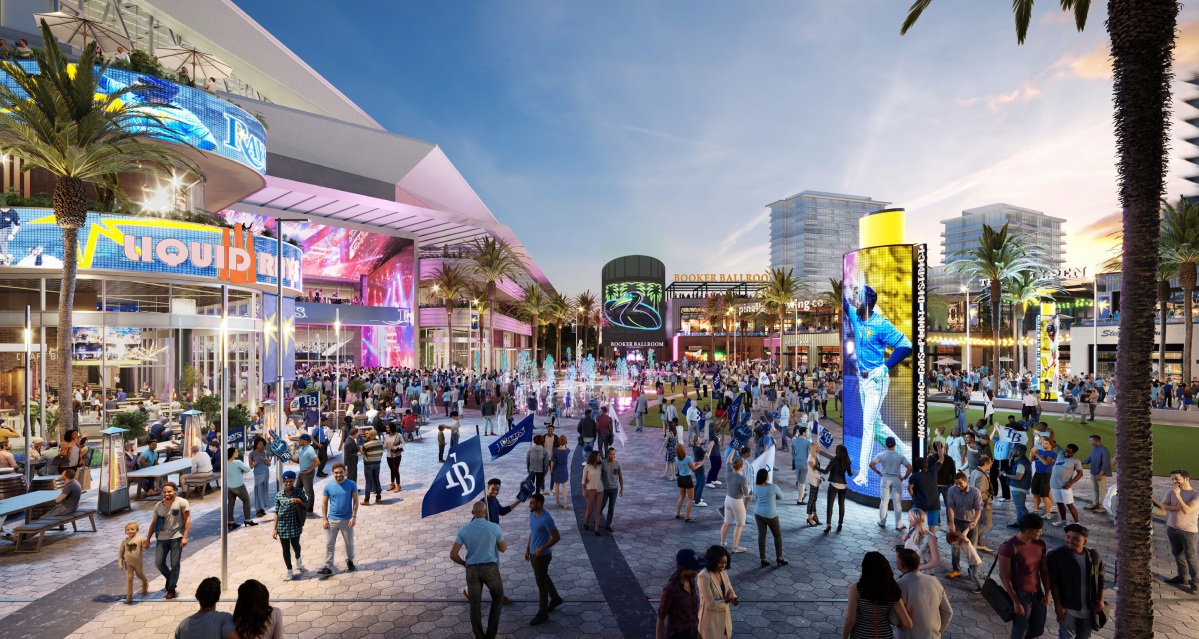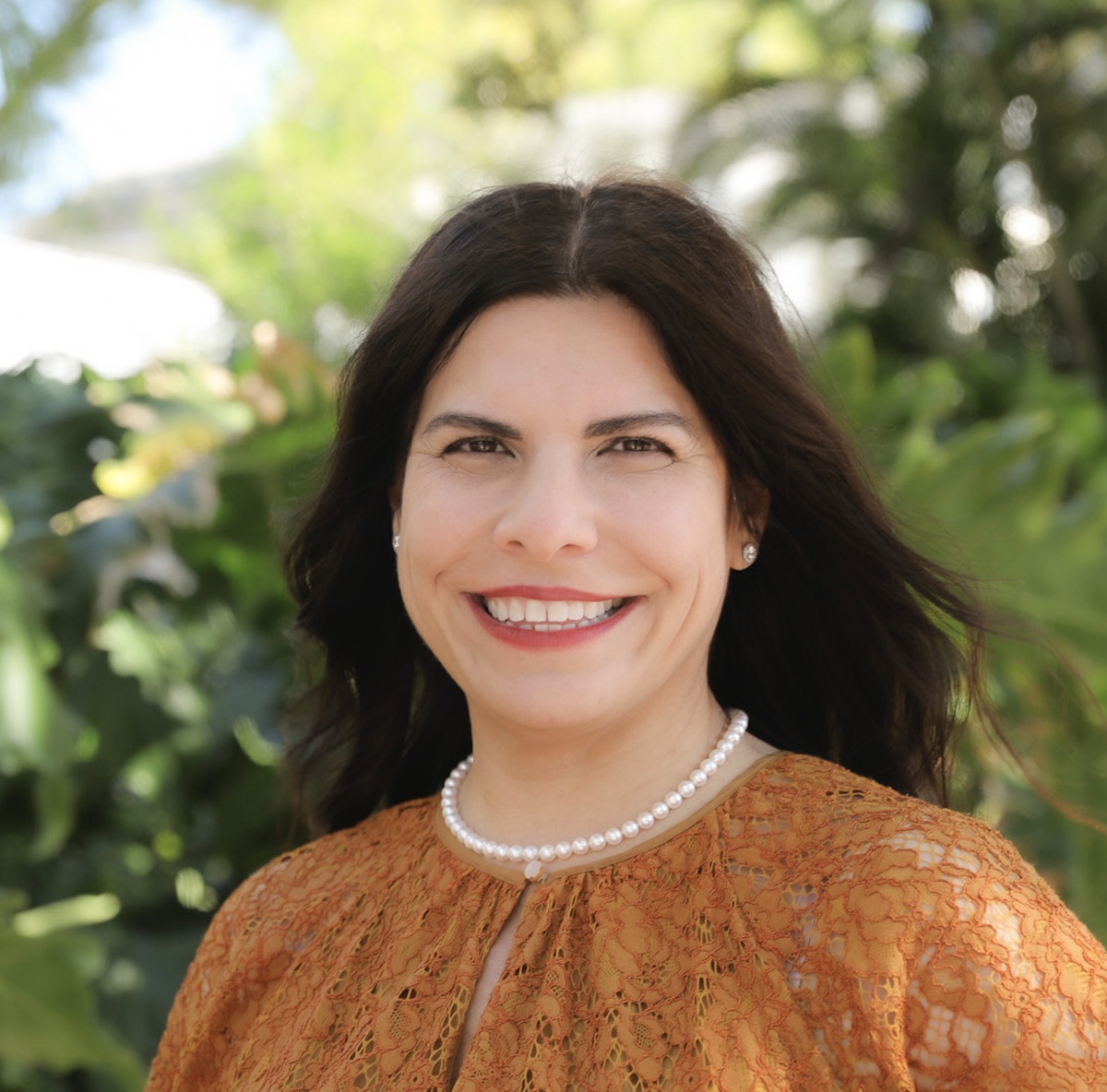
This rendering shows an entertainment promenade outside a proposed new Tampa Bay Rays stadium, the centerpiece of St. Petersburg’s proposed $6.5 billion Historic Gas Plant District development.

The devil is always in the details. On May 9, the St. Petersburg City Council had its first opportunity to discuss the final draft of the Historic Gas Plant Development agreement. The agreement covers only the redevelopment of the land surrounding the stadium. Other agreements will cover the stadium and the Tampa Bay Rays.
The legal terms of the agreement leave the city unprotected. As written, we are entering into a contract with Historic Gas Plant District Partnership (the “developer”) that we have no information about. We do not know the financial strength or ownership interests of this entity. When we do learn who we are entering into a contract with and their financial strength, Article 15 of the agreement contains 12 different ways this developer can transfer the whole agreement, without City Council approval, to another entity that we will know nothing about. No vetting whatsoever. This transfer can occur as early as the day after we approve this agreement.
There is an unacceptable lack of legal remedies if there is a default by the developer. The city has no termination rights, even if there are material defaults by the developer. The developer can extend deadlines with no limits based on excusable development delays, and the city can’t terminate the contract. Besides being able to sue for damages for a monetary default, the city’s only remedy for other material defaults is to exercise its right to not sell additional parcels under certain circumstances.
We were originally advised that 60.91 acres (not including land for a stadium) was agreed to be sold to the developer for $105,268,000. Now, the agreement is to sell 65.355 acres with no increase in the purchase price. The last appraisal dated Jan. 1, 2023, appraised 60.91 acres at $279,360,000 without improvements or demolition costs considered. The city has since agreed to contribute $142 million infrastructure. There is no current plan by the city to update this appraisal.
The city reduced the purchase price by subtracting the value of the land provided for open space, affordable housing and the Woodson African American museum; $53 million infrastructure contribution from the developer (even though the developer can sell land with improvements); and $50 million to be provided in community benefits. No portion of the purchase price is being paid upfront and there is no interest accruing on the unpaid purchase price. As a result, the developer is receiving a 0% interest loan on an already discounted purchase price.
The $50 million in community benefits is a centerpiece of the deal and an important benefit to the community. In exchange for these community benefits, the city agreed to discount the land by $50 million upfront. However, the agreement conditions payment of some of the community benefits by the developer and there is ambiguity on how and when the developer makes payments. The effect of these conditions and ambiguities is that the city could end up with fewer community benefits than promised.
Another critical component of this deal is the difference between what the developer is required to do (minimum development requirements) and what the developer may choose to do (target development). The depictions of the development and economic projections have been based on target development goals that are not guaranteed or required under the contract.
Under the agreement’s minimum development requirements, the forecast 30-year cumulative gross property tax revenue to the city from the project is $340 million — not the $475 million that is in the economic projections based on target development goals. (If the developer chooses to build out to the target, then the potential tax revenue to the city could be as high as $475 million.) These numbers are nominal values and do not account for inflation. Moreover, these projected tax revenues assume an annual growth rate of 7%.
The money that would be borrowed by the city for the stadium and infrastructure totals $417.5 million. With debt service, it is currently forecast to cost us $684 million. We would start paying this debt in 2025 and we will continue paying off the debt until 2055. The money coming back to the city from the purchase price and the forecast tax revenue, whether under minimum or target development, does not cover the total debt service.
I have highlighted some of the issues, but there are other issues in the agreement.
The developer can cherry-pick parcels it wants within those 65 acres and reject parcels based on updated due diligence. There are insufficient affordable housing requirements, long delivery periods, low penalties for not providing the affordable housing, low minimum development requirements — and more.
There are no outs for us in paying back the bonds. There are no guarantees that any of the individuals we are dealing with today will be here for a substantial part of the agreement’s 30-year term. We could be stuck with a 30-year agreement involving 65 acres of prime real estate in downtown with these terms and lack of legal remedies that is transferable without the City Council’s approval. What are the chances that before the debt is paid in 2055 there will be a need for a new stadium and the process begins again, but without the land that has been sold under these terms? We can do better.
Lisset Hanewicz represents District 4 on the St. Petersburg City Council.

